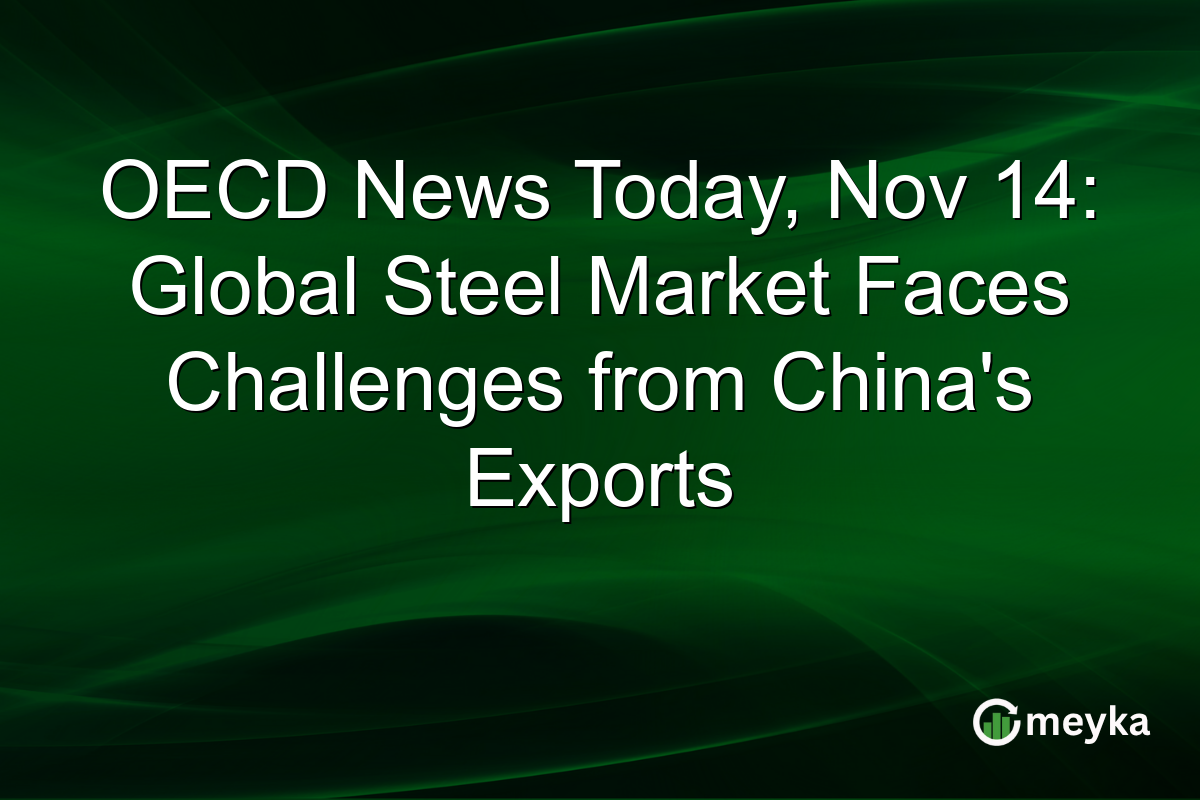OECD News Today, Nov 14: Global Steel Market Faces Challenges from China’s Exports
The global steel market is under pressure as highlighted by the OECD’s latest report. On November 14, the organization addressed the growing concerns about increased steel overcapacity, especially driven by exports from China. This situation poses significant challenges for commodity prices and related industries on a global scale. Investors in the steel and commodities sectors have reasons to closely monitor these developments, which could lead to shifts in strategy and market dynamics. As we dive deeper into this issue, the details reveal the critical role that China plays and the widespread effects on the international stage.
The Issue of Steel Overcapacity
Understanding Global Steel Overcapacity
The OECD’s report focuses on the persistent issue of steel overcapacity. The production levels have surpassed demand in many regions, leading to excess supply. This is particularly pronounced in China, the world’s largest steel producer. Recently, China has been exporting significant volumes of steel at competitive prices, impacting global markets.
These exports often affect steel prices worldwide, sometimes leading to trade tensions. Countries facing influxes of cheaper Chinese steel have raised concerns about the sustainability of their domestic industries. For policymakers and market analysts, this trend underscores the need for regulatory measures and potential restructuring in the steel industry.
Impact on Commodity Prices and Related Industries
Ripple Effects on Commodity Prices
The overcapacity and competitive pricing of Chinese steel influence not just steel prices but also related commodities. Raw materials like iron ore and coal, key inputs in steel production, also experience price fluctuations. This situation creates a challenging environment for mining companies and other raw materials suppliers.
For industries heavily reliant on steel, such as construction and automotive, price stability is crucial. Fluctuating steel prices can lead to unpredictability in project costs and budget allocations. Thus, steel overcapacity poses broader economic implications beyond the steel industry, affecting various sectors globally. Source
China’s Role in the Steel Market
Analyzing China’s Steel Export Strategies
China’s dominant position in the global steel market is not new, but its export strategies have evolved. As the country aims to maintain its economic growth, steel exports are a crucial component. However, these exports, often priced lower, have led to competitive disadvantages for producers in other countries.
The OECD highlights the need for international cooperation to address these imbalances. Potential solutions include reducing state subsidies that might encourage overproduction, implementing better trade regulations, and promoting fair competition. Such measures are vital in helping stabilize global steel markets and ensuring a level playing field for all producers.
Investor Implications and Market Sentiment
What This Means for Investors
For investors, the ongoing steel market dynamics signal the importance of due diligence. Those with interests in steel, mining, or related sectors must consider geopolitical factors and trade policies. The current sentiment suggests caution, with many market watchers advocating for diversification to mitigate risks.
Additionally, this situation provides opportunities. Companies with innovative approaches to efficiency or sustainability might benefit from market shifts, attracting forward-thinking investors. As the landscape evolves, keeping a pulse on OECD insights and international trade developments becomes even more critical. Join the conversation on social media to see what others are saying.
Final Thoughts
The ongoing pressures in the global steel market as outlined by the OECD’s recent report present multifaceted challenges. China’s significant role through its export strategies is reshaping market dynamics, prompting nations to rethink policies surrounding trade and industrial strategy. For investors, this environment calls for careful analysis and strategic foresight. Opportunities may arise through innovation and partnerships, but the risks associated with overcapacity and price volatility are not to be underestimated. Staying informed with real-time analytics on platforms like Meyka may provide the edge needed in navigating these complexities effectively.
FAQs
Steel overcapacity occurs when the production capacity of steel exceeds the demand. This leads to lower prices and impacts industries reliant on stable steel prices.
China is the largest steel producer, whose exports affect global prices. Competitive pricing from China can challenge domestic industries in other countries.
Overcapacity affects not just steel but raw materials like iron ore and coal. It leads to price volatility, impacting suppliers and industries relying on these inputs.
Disclaimer:
The content shared by Meyka AI PTY LTD is solely for research and informational purposes. Meyka is not a financial advisory service, and the information provided should not be considered investment or trading advice.






